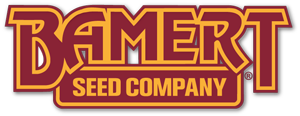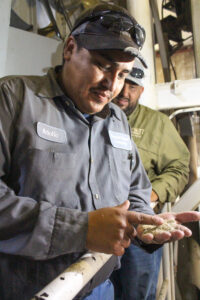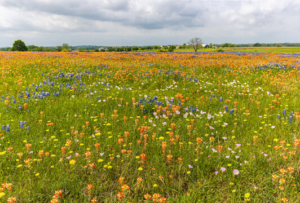Custom Seed Blends: Essential for Effective Reclamation Projects
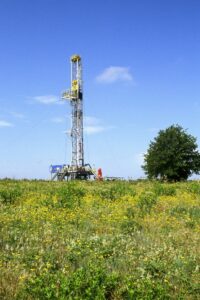 When managing a large-scale reclamation project, particularly in the oil and gas or solar farm sectors, the choice of seed blend can significantly impact both your budget and your project’s overall success.
When managing a large-scale reclamation project, particularly in the oil and gas or solar farm sectors, the choice of seed blend can significantly impact both your budget and your project’s overall success.
Custom seed blends tailored to your specific needs ensure that the reclaimed land not only meets regulatory standards but also thrives long-term — without costly reseeding or excessive maintenance.
With our seven decades of expertise, we’ll summarize what project managers need to know to make informed decisions.
Key points:
- How to identify your project’s seed-related goals
- Land specifics and considerations
- Why designing a seed mix might be right for you
- Understand how PLS affects price
- How to choose quality seeds and suppliers
How Your Goals Affect Your Custom Seed Blend
Reestablishing a diverse native plant community of shrubs, forbes, and grasses is essential for the success of your project. Your blend depends on several factors.
Overall Considerations:
-Specific heights for visibility or maintenance
-Pollinator habitat including annual and perennial flowers
-Scenery that matches a certain aesthetic
-Wind, precipitation, and temperature challenges
-Erosion control or steep slope cover
-Drought or water-holding capacity
-Grazing support, frequency, and amount
-Agricultural productivity
Successful establishment relies on blends specifically designed for your goals.
Mixing Fast and Slow Growth in Custom Seed Blends:
Are you looking for long-term reclamation, but need temporary cover as well? Keeping invasive or unwanted growth to a minimum while you establish your landscape cover is essential. Including quick-growing species in your blend 1) minimizes bare patches that are vulnerable to weeds 2) gives slow-growth species time to establish, and 3) keeps maintenance costs down during the transition.
Once you have the big picture, it’s time to gather the important details.
Key Land Considerations for Project Managers
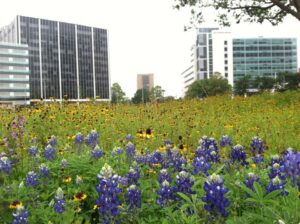
What was the plant community of the land pre-disturbance?
As a project manager, selecting the right custom seed blend for your ecosystem involves several critical considerations:
- Soil Analysis: Conduct a thorough soil analysis to understand the pH, nutrient levels, and texture, which will influence the choice of seeds.
- Climate Compatibility: Choose species that are adapted to the local climate conditions, including temperature extremes and precipitation patterns.
- Regulatory Requirements: Ensure that the seed blend complies with any local, state, or federal regulations related to land reclamation and environmental protection.
Tool: Check the WSS (web soil survey) for an ecological site description of your area.
Choosing an Effective Reclamation Seed Blend
Explore all your options upfront to decide which is right for you.
Pre-Selected Seed Blends
Your project may have a pre-built solution. Here are some suggestions for common reclamation projects.
Solar projects in the Southern Great Plains may benefit from Solar Grass Blend. Its low plant heights make it ideal for low maintenance costs. Mixing in Solar Wildflower Blend is recommended to improve aesthetics and pollinator habitat.

Land managers and cattlemen benefit from Premium Pasture Blend because it includes native warm and cool season grass — increasing the days per year of grass production. This blend thrives at less than 25” precipitation and improves soil structure, infiltration rates, and water-holding capacity.
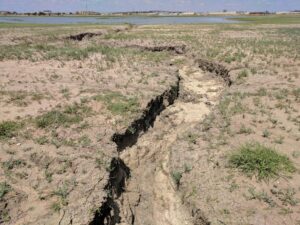
For green spaces that resist drought and require less frequent mowing, try Buffalograss.
Explore the full Bamert Seed Company plant catalog, or contact us so we can give our expert opinion.
Designing a Custom Seed Blend
Large-scale reclamation projects tend to require a custom mix to ensure success.
Choose a mix of native and adaptive species that meet your ecological and regulatory goals.
- Blend Formulation: Work with a seed supplier to formulate a blend that balances fast-establishing species with long-term sustainability.
- Testing and Adjustment: Conduct small-scale tests to monitor the performance of the seed blend and make adjustments as necessary.
While this avenue may require more preparation, the chances of successful establishment, effective weed control, and achieving overall goals are greatly increased.
Understanding How PLS Affects Price
As a Project Manager, budget and potential lost time replanting matters. Don’t waste money on cheap seed that doesn’t work for you long term.
Educate yourself about PLS (Pure Live Seed) or work with a reputable seed company — they should walk you through these equations to get you the most cost-effective custom seed blend.
Pure Live Seed (PLS) measures the percentage of live, viable seed in a seed lot, indicating how much of the seed can germinate.
Sometimes, cheaper bulk seed has a lower PLS, making it more expensive per unit of viable seed than higher-priced seed with a higher PLS.
Choosing the Right Custom Seed Blend Supplier
Partnering with a reputable seed supplier is crucial for obtaining high-quality seeds and expert advice. Look for suppliers who:
- Offer a wide range of native and adaptive species.
- Provide custom blending services.
- Have experience with large-scale reclamation projects.
- Specialize in your area and have a proven track record.
- Offer resources, ease of contact, and follow-up care.
- Include certified tags with genetic identity of seeds, purity, and germination

Many states require seed testing every 9 months, but check your local regulations for more information.
Bamert Seed Company tags include all required information with two important additions: 1) seed lot testing dates, which are performed every 6 months, and 2) the information obtained from the independent seed test.
Custom Seed Blends: A Project Manager's Key to Successful Reclamation Projects
Custom seed blends are indispensable for successful reclamation projects, particularly in the demanding environments of oil & gas fields and solar farms. By carefully selecting and formulating the right blend, project managers can ensure the restored land is ecologically stable, compliant with regulations, and sustainable in the long term. Investing time and resources in the right custom seed blend will yield significant dividends in the success of your reclamation efforts.
Ready to optimize your reclamation efforts? Fill out our contact form to connect with a specialist who can help you choose the perfect custom seed blend for your project.
